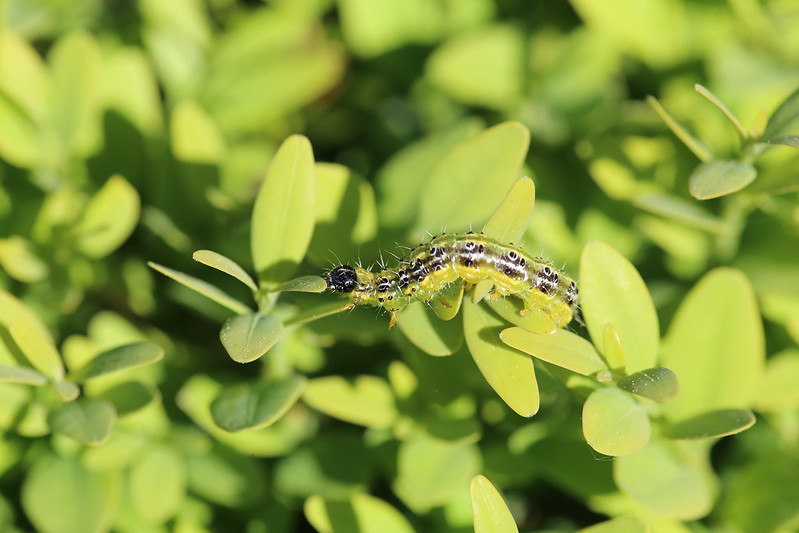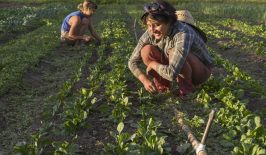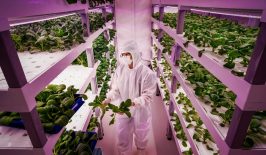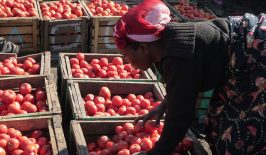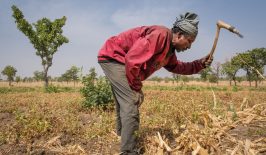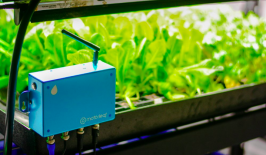Until recently, artificial intelligence sounded like something from a far away future. But it’s already popping up all over the place in our everyday lives: in speech and facial recognition on our smartphones, automatic translation tools and online customer service chatbots. The range of possible applications of AI is huge, and constantly expanding. And its potential for use in agriculture is growing too.
Agriculture production is currently facing a huge variety of different challenges all over the world – due to the increasing demand for food from a steadily growing population, fierce competition for dwindling natural resources such as soil and water, the loss of biodiversity and the effects of climate change. Last but not least, pests and plant diseases – which damage harvests, reduce the availability of food and increasing food costs – also pose a threat to global food security. According to the FAO, plant pests and diseases are responsible for losses of 20-40% of global food production. This is a huge amount, especially when you consider that an estimated 820 million people around the world don’t have enough to eat.
The Berlin-based startup PEAT is tackling this problem with its Plantix app. Take a photo of a plant infected by a disease or pest and the app will analyse the photo, compare it with existing information and provide information about the plant’s health. It will also provide options for treating it – not just chemical treatment methods, but also preventative measures. For example, instead of using pesticides, they recommend tackling spider mite infestations with a combination of biological and preventative methods – applying rapeseed, basil and neem oils, introducing spider mites’ natural predators, as well as weeding and ensuring plants are well hydrated.
Plantix specialises primarily in agricultural crops that are important for the global food supply, such as bananas, wheat, rice, soybeans and corn. Each photo sent in and analysed expands the database’s knowledge pool and enables increasingly accurate diagnoses. According to PEAT, the software can already detect plant diseases and pests with an accuracy of up to 95 percent, since each plant disease, pest or nutrient deficiency leaves a specific pattern.
When even AI doesn’t have the answer…
If no suitable solution for the problem can be found via the AI, then users can turn to the community for help. Here, uses can post pictures and questions and have their queries answered by experts. The service has the potential to be of enormous help for small farmers, especially in the Global South. People who only have a small area of land to grow crops to feed themselves and their families are dependent on good yields. A poor harvest can quickly endanger livelihoods and the expert knowledge supplied by agricultural organisations often doesn’t reach the wider masses. With smartphones and the necessary network coverage becoming increasingly available in remote areas of the world, a solution like this could save harvests and livelihoods too.
Another possible application of Plantix’s plant recognition software is to increase knowledge about the spread of diseases. “About 50,000 images are sent in daily via the app and analysed by the neural networks. These images contain different information such as location and disease. Using this data, PEAT is able to follow the spread of diseases in real time and also model how diseases spread, and which factors encourage or hinder their spread,” explained Korbinian Hartberger of PEAT to RESET.
The application was first trialled back in 2018, when the invasive butterfly species “fall armyworm” made its first appearance in Asia, becoming particularly prevalent in India. The butterfly is originally native to the American continent, but has since been introduced to Africa and has now become a plague in Asia too. It causes significant yield losses in corn, rice, sorghum, millet and other plants. According to FAO estimates for 2018, up to 17.7 million tons of corn were lost to the pest in Africa alone. This amount of corn could feed several million people and represents an economic loss of up to 4.6 billion USD. PEAT has compiled the information collected on the status of the “fall armyworm” in an interactive map that shows how far the pest has spread, giving farmers time to at least take preventive countermeasures and partially protect their crops.
The Plantix app is available to download free for Android.
This article is part of the RESET Special Feature “Artificial Intelligence – Can Computing Power Save Our Planet?”

The RESET Special Feature on AI is part of a project funded by the Deutschen Bundesstiftung Umwelt (German Federal Environmental Foundation DBU). As part of this project, over a period of two years we will be developing four RESET Special Features on the topic of “Opportunities and Potentials of Digitalisation for Sustainable Development”.
More information here.
